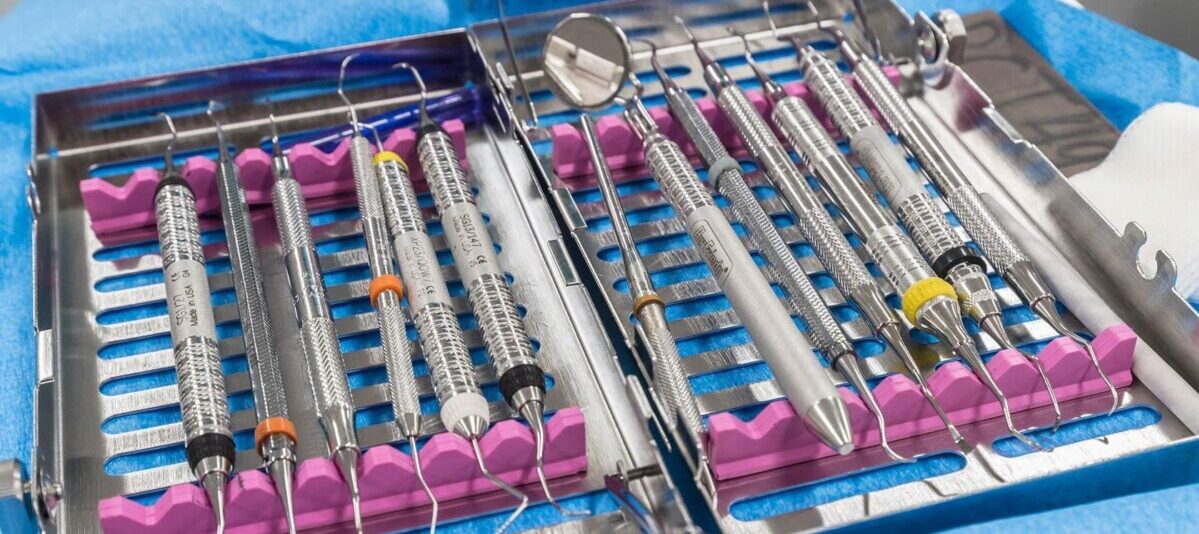
Patient B is a 70 year old female of Asian descent living with Hypertension and High cholesterol. The measured BP is 138/87 pulse 82, corresponding to Hypertension Stage 1. ASA 2.
–Due to the measured blood pressure, the patient was informed and a referral was given.
Oral Interview
Medications
- Hypertension: Lopressor (metaprolol) 100mg taken for 5 years. There are no notable side effects on dental treatment for well-controlled blood pressure. The patient must be slowly reclined from a supine to an upright position to prevent orthostatic hypotension.
Dental considerations: xerostomia, altered sense of taste.
- High cholesterol: Patient reports no medications needed at this time.
At-Home Care
- Manual toothbrush, two times per day.
- Sensodyne dentifrice, two times per day.
- Sensodyne is composed of sodium fluoride and potassium nitrate, which helps chemically desensitize nerve fibers and reduce tooth sensitivity.
Assessments
Extra-/Intra- Oral Examinations
- Prominent observation: various 10cm x 10cm flat, red circular macules around neck, asymptomatic; patient reports acupunctural cupping.
- Short lingual frenum.
- White-yellow coated dorsal surface on posterior one-third of the tongue.
- Gingiva presents with generalized pale-pink, smooth, soft with rounded papillae. Gingival margins apical to CEJ. Localized red, puffy papillae on posteriors with moderate bleeding upon probing.
Dental Charting
- PFM crowns on maxillary second molars and teeth #4, #30.
- Suspicious carious lesions on interproximal surfaces of posterior teeth on upper left and lower left quadrants.
-Due to the suspicious lesions, the patient is at high caries risk. A referral is given for further comprehensive evaluation and restorative work. Periodontal Charting
- Generalized 3-4mm PD with localized 5-7mm PD on posteriors.
Full Mouth Series – Radiographic Statement
- Calculus: Localized on molars. Crest of bone: generalized 3mm apical to CEJ with Stage II furcation on tooth #3. Generalized 30% horizontal bone loss with localized 45-50% respective to tooth #3. Suspicious carious lesions: #3M detected radiographically.
Periodontal Status
According to the assessments and radiographs, the patient has generalized Periodontitis Stage III, Grade B with heavy interproximal calculus and moderate staining.
Treatment Plan & Implementation
Based on the initial oral interview, the patient’s oral home care is deemed poor. The goal is to improve her current techniques in brushing and using an interdental aid. On the initial visit, the Modified Bass brushing method is implemented on a typodont for educational purposes. Then, the patient utilizes her own toothbrush on her teeth to repeat the motion of angling the toothbrush at 45 degrees at the gingival sulcus with light pressure. A powered toothbrush was also recommended to ensure plaque is better removed in between crowded teeth. On the second visit, a water flosser is taught. Since the patient has several crowns, it is essential to flush out the debris underneath the restorations. With the device initially turned off, the patient is shown how to direct and angle the tip at 45 degrees toward the gingival sulcus, then turn on the machine, and guide the tip along the contour of the gingiva. In turn, the risks for further potential caries and bone loss are decreased. Patient is advised to incorporate frequent water intake to reduce symptoms of xerostomia. She may also visit her general dentist to get prescribed a mouthrinse, Biotene, to help stimulate saliva concentration in the oral cavity. Increasing fluid in the oral cavity will lower the proliferation of acid-producing bacteria, like Streptococcus mutans, that cause caries. On the third visit, a tongue scraper is recommended. Using this interdental tool will help diminish the yellow coating of the tongue and halitosis. The yellow coating is usually composed of bacteria, such as Candida albicans, and dead skill cells that can accumulate to bad breath. If there is an overgrowth of the bacterial yeast, then a condition called oral thrush can occur and spread. Anti-fungal medication can be prescribed, like Azocan (fluconazole).
Initial Visit: Expose Full Mouth Series with written patient consent, educate oral hygiene instructions (OHI).
Second Visit: Educate oral hygiene instructions (OHI), scale quadrants 1 and 4 to completion with Ultrasonic and hand scalers with prior application of topical anesthetic: 20% Benzocaine and Oraquix: 2.5% lidocaine + 2.5% prilocaine for sensitivity.
Third Visit: Educate oral hygiene instructions (OHI), scale quadrants 2 and 4 to completion with Ultrasonic and hand scalers with prior application of topical anesthetic: 20% Benzocaine and Oraquix: 2.5% lidocaine + 2.5% prilocaine for sensitivity. Finish treatment with engine polishing with prophy paste and 5% NaF varnish.
Evalution
On the third visit, the gingiva of the previously scaled quadrants appeared less inflamed with decreased puffy papillae. The patient reports incorporating the Modified Bass brushing method with her manual toothbrush, water flosser, and tongue scraper in her daily routine; she has not purchased a powered toothbrush yet.
Based on the assessments and evaluation, it is recommended for the patient to return every 3-months for periodontal maintenance.



